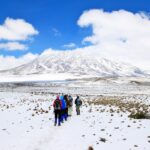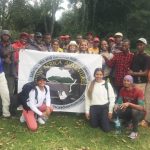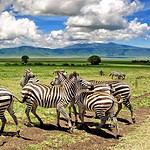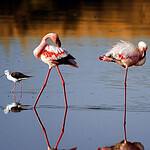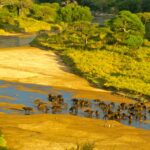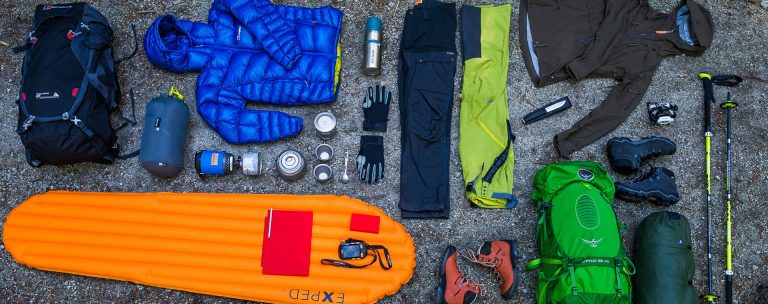Table of Contents
Tanzania is renowned worldwide for its breathtaking landscapes, diverse ecosystems, and abundant wildlife. Home to iconic species such as lions, elephants, giraffes, and zebras, the country boasts some of the most celebrated national parks and reserves, including the Serengeti, Ngorongoro Crater, and Selous Game Reserve. However, these treasures face significant threats from habitat loss, poaching, climate change, and human-wildlife conflict. Fortunately, numerous wildlife conservation efforts in Tanzania are working tirelessly to protect the country’s natural heritage.
As travelers, we have a unique opportunity to support wildlife conservation efforts in Tanzania and play an active role in safeguarding the environment. By choosing responsible tourism practices, visitors can directly contribute to the success of wildlife conservation efforts in Tanzania , ensuring that future generations can experience the same awe-inspiring beauty. These initiatives not only protect endangered species but also empower local communities, making wildlife conservation efforts in Tanzania a vital component of sustainable development.
The Importance of Wildlife Conservation in Tanzania
Tanzania’s wildlife is not just a source of pride for its people but also a critical component of the global ecosystem. The country hosts over 4 million hectares of protected areas, which serve as sanctuaries for countless plant and animal species. These regions attract millions of tourists annually, generating revenue that supports local communities and funds wildlife conservation efforts in Tanzania . However, the challenges facing wildlife conservation efforts in Tanzania are immense. Poaching remains a persistent issue, with illegal hunting threatening endangered species like rhinos and elephants. Additionally, expanding human populations lead to habitat fragmentation, putting pressure on wildlife corridors and increasing conflicts between humans and animals.
By understanding and supporting wildlife conservation efforts in Tanzania , tourists can help mitigate these threats while fostering sustainable tourism practices. These initiatives are crucial for preserving the delicate balance of Tanzania’s ecosystems and ensuring the survival of its iconic species. Through active participation, visitors can contribute significantly to the success of wildlife conservation efforts in Tanzania , promoting long-term environmental health and community well-being. Below, we explore key projects underway and ways visitors can get involved, highlighting how each action supports broader wildlife conservation efforts in Tanzania .
1. Anti-Poaching Initiatives: Protecting Endangered Species
One of the most pressing issues in wildlife conservation in Tanzania is combating poaching. Organizations such as the Tanzania National Parks (TANAPA) and the Selous-Pare Transfrontier Conservation Area are at the forefront of anti-poaching efforts. These groups employ rangers equipped with modern technology, including drones and GPS tracking systems, to monitor wildlife movements and deter poachers. They also collaborate with international organizations like the World Wildlife Fund (WWF) to strengthen enforcement measures and raise awareness about the dangers of illegal wildlife trade.
Tourists can contribute by choosing tour operators that adhere to ethical guidelines and fund anti-poaching activities. For instance, booking safaris through certified eco-tourism companies ensures part of your payment goes toward supporting ranger patrols and community-based conservation projects. Learn more about anti-poaching efforts in Tanzania.
2. Community-Based Conservation Programs: Empowering Local People
Community involvement is crucial for successful wildlife conservation in Tanzania. Programs like the Northern Tanzania Rangelands Initiative (NTRI) work directly with local Maasai and other indigenous groups to promote coexistence between humans and wildlife. By providing education, healthcare, and economic opportunities, these initiatives reduce reliance on natural resources and encourage communities to act as stewards of their environment.
Visitors can support these efforts by participating in cultural tours or purchasing locally made crafts. Many lodges and campsites partner with nearby villages, offering guests the chance to interact with residents and learn about traditional lifestyles. This form of tourism benefits both wildlife and communities, creating a win-win situation.
3. Habitat Restoration Projects: Reviving Ecosystems
Restoring degraded habitats is another vital aspect of wildlife conservation in Tanzania. Organizations like the Tanzania Forest Conservation Group (TFCG) focus on reforestation and soil rehabilitation in critical areas like the Usambara Mountains and Kilimanjaro region. These projects aim to restore natural habitats for endangered species while improving water quality and reducing erosion.
Travelers can participate in tree-planting activities organized by eco-lodges or volunteer with NGOs during their stay. Even small contributions, such as donating to restoration funds, make a difference. For those interested in learning more about habitat restoration,
4. Research and Monitoring Programs: Understanding Wildlife Dynamics
Scientific research plays a pivotal role in wildlife conservation in Tanzania. Institutions like the Wildlife Conservation Society (WCS) conduct studies on animal behavior, population trends, and migration patterns to inform management strategies. Data collected through collaring and camera trapping helps identify priority areas for protection and assess the effectiveness of current interventions.
As a tourist, you can support these efforts by joining citizen science programs offered by safari operators or park authorities. These initiatives allow participants to assist researchers in collecting data, enhancing the overall impact of conservation work. Visit the WCS website to learn about ongoing research projects in Tanzania.
5. Eco-Tourism: A Sustainable Approach to Conservation
Eco-tourism represents one of the most effective ways to balance tourism development with wildlife conservation in Tanzania. By prioritizing sustainability, eco-tourism minimizes environmental impacts while maximizing benefits for local communities and wildlife. Many lodges and camps now operate under green certifications, ensuring they follow strict environmental standards.
When planning your trip, opt for accommodations that emphasize eco-friendly practices, such as solar power usage, waste reduction, and water conservation. Supporting these businesses directly contributes to wildlife conservation efforts in Tanzania. For tips on finding eco-friendly options, refer to this guide .
Ways Tourists Can Support Wildlife Conservation in Tanzania
Beyond participating in specific programs, there are several general actions tourists can take to support wildlife conservation in Tanzania:
- Respect Wildlife : Maintain a safe distance from animals during safaris and avoid feeding or disturbing them.
- Choose Ethical Operators : Book tours with companies committed to responsible tourism practices.
- Reduce Plastic Waste : Carry reusable bottles and bags to minimize single-use plastics.
- Support Local Economies : Purchase souvenirs from artisans and dine at locally owned restaurants.
- Educate Yourself and Others : Share knowledge about wildlife conservation in Tanzania to inspire others to take action.
Every Action Counts
The success of wildlife conservation efforts in Tanzania depends on collaboration between governments, organizations, and individuals. As tourists, our choices and actions can significantly influence the fate of the country’s incredible biodiversity. By actively supporting wildlife conservation efforts in Tanzania , such as anti-poaching initiatives, engaging with community-based programs, contributing to habitat restoration, and embracing eco-tourism, we become integral partners in preserving Tanzania’s natural wonders.
Every action taken, whether large or small, plays a vital role in the broader mission of wildlife conservation efforts in Tanzania . These initiatives not only protect endangered species but also empower local communities, ensuring sustainable development for years to come.
So, whether you’re planning a safari adventure or simply dreaming of visiting one day, remember that your involvement matters. Every effort contributes to the collective goal of safeguarding Tanzania’s rich wildlife heritage. Together, let’s commit to supporting wildlife conservation efforts in Tanzania , ensuring that future generations can experience the unparalleled magic of its wildlife.





